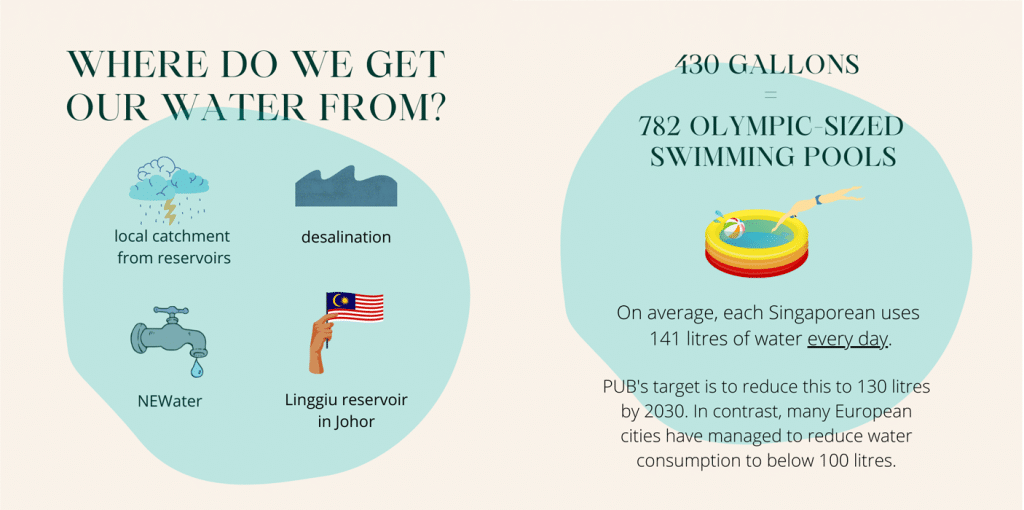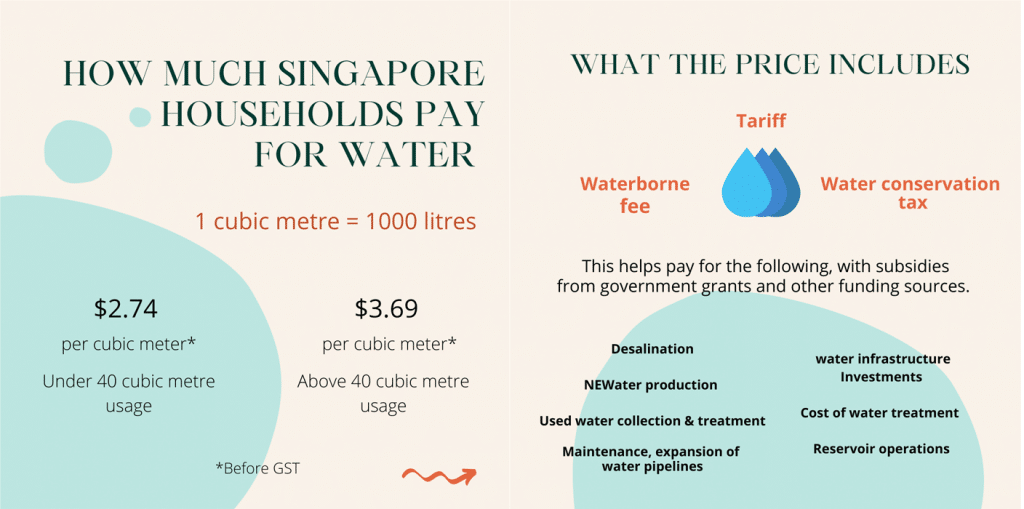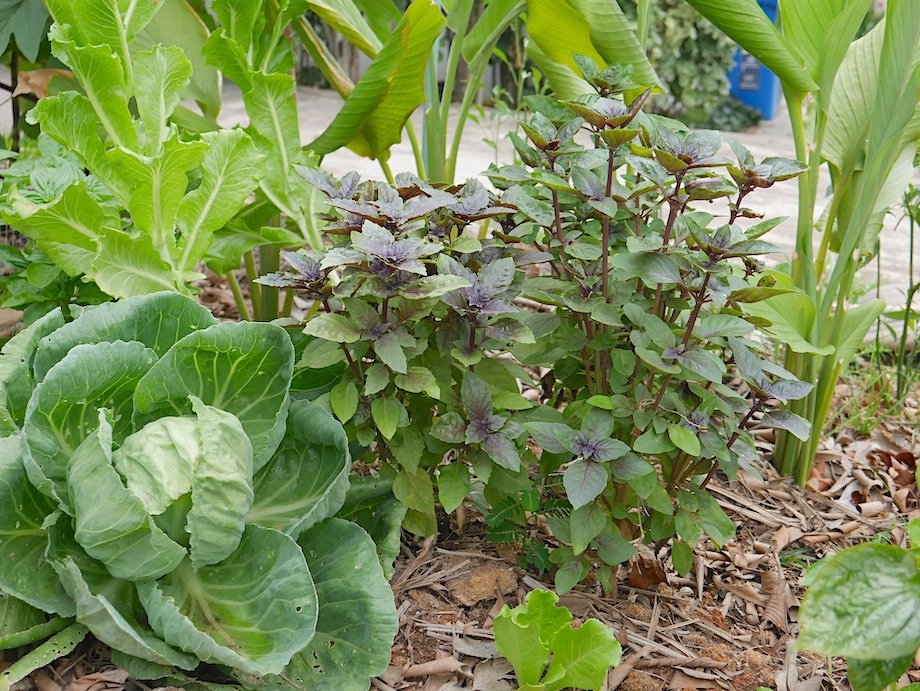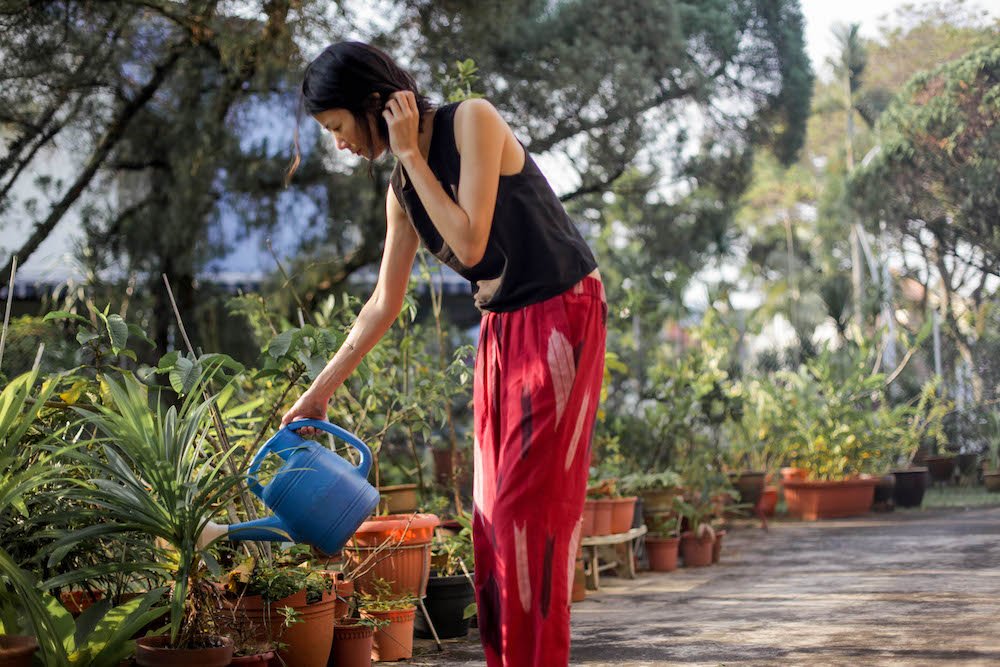We already know that water is precious, and in Singapore, it’s expensive because we live in a water-scarce nation. We are one of the most water-stressed countries in the world, and the pricing of water is meant to reflect the value and scarcity of water here. In this post I’d like to share why it is important that we aim for a water-efficient garden indoors and outdoors, especially in Singapore, and include 9 water-wise gardening techniques that you can try at home.
Why have a water-wise garden?
As gardeners and lovers of plants, it is in our interests to care for the planet because it houses all the plants we love, and the climate because it affects all the plants we have at home and in the wild, the biodiversity around it — and us! Beyond our love for plants we also need to care for the resources that go into gardening. Water security is certainly a thing that should be on our radar.
Each day, Singapore uses approximately 430 million gallons of water, or 782 olympic-sized swimming pools, and this is expected to double by 2060. Households account for 45% of water usage and on average, each Singaporean uses 141 litres of water every day. Public Utility Board’s (PUB) target is to reduce this to 130 litres by 2030. In contrast, many European cities have managed to reduce water consumption to below 100 litres.
As recent as 2016, a major source of our water supply – Linggiu Reservoir – experienced a drastic dip in its water level. At its lowest point, it was only 20% full. Fortunately, it has since returned to healthy levels. As part of our water agreement with Malaysia, we draw up to 250 million gallons of raw water a day. Other sources of water include desalination, NEWater and local catchment from reservoirs.
For these reasons, we need to use water-wise gardening techniques to conserve what we can.

What is the cost of water in Singapore and why is it so expensive?
It costs $2.74 per cubic meter (before GST) when you use under 40 cubic metres of water and $3.69 per cubic meter (before GST) if your usage exceeds 40 cubic metres. For reference, 1 cubic metre = 1000 litres.
This price includes the waterborne fee, tariff and water conservation tax. This helps pay for the following, with subsidies from government grants and other funding sources: desalination, NEWater production, used water collection and treatment, maintenance, expansion of water pipelines, water infrastructure, investments, cost of water treatment, and reservoir operations.
It is worth noting that desalination is an energy intensive process that extracts salt from seawater, this salt is discharged back into the sea. It is the most energy intensive source of water in Singapore, however PUB is working on making it a significantly more energy efficient operation. We currently have 4 desalination plants, a fifth one is expected to be completed by this year. The goal is for desalinated water to meet 30% of Singapore’s future water demand by 2060.
Getting NEWater from used water requires several times the energy used to treat rainwater. Also, when treating our waste water and turning it into waste water, its by-product is sludge. This is usually sent to an incineration plant then buried at Pulau Semakau. PUB has been turning this into biogas so that it can be used to power generators. The goal is for NEWater to supply up to 55% of our water needs by 2060.
With so many resources going into processing water, we really should be mindful of how we use it.

How to have a water wise garden?
Here are 9 water-wise gardening techniques that you can use at home or in your community garden.
1. Capture whatever water you can
Even in the shower you can catch water from your shower head, since it takes time for the water to warm up. Catch air con condensation from the drain pipe and harvest rainwater if you are able to.
2. Repurpose water where possible
After washing rice, use it to soak or wash your vegetables, and then water your plants with it. Have a fresh water aquarium or pond? Use this water on your plants when changing out water.
3. Mulch your plants
Mulch helps to retain moisture, protect soil, suppress weeds, it can also make your garden look more aesthetically pleasing in the process. Mulch is a layer of material used to cover soil, and includes coir fibre, coir chips, lucerne, sugar cane leaves, compost, gravel, black plastic and geotextile. Living mulch, in the form of groundcover is useful also. Mulch is helpful during the hot and dry weather, in the dry months of the early part of the year, and during the southwest monsoon season in June to September when we have squalls.
4. Don’t overwater your plants
Give your plants only the water it needs. Observe how well draining your potting mix is, and how drying the conditions of its immediate environment is and water accordingly. Tweak the microclimate if required.
5. Grow plants that are native or able to adapt to our region
When we grow plants that are not used to our climate, we need to use more resources to recreate its preferred microclimate. This includes humidifiers, cooling mechanisms, sometimes more watering as it is not tolerant of our hot and humid conditions.

6. Add organic matter to your soil
By adding organic matter like compost or vermicast or leaf mould, it can soil improve its water holding capacity. Humus molecules help retain water for the plant’s root use. Organic matter is also able to store nutrients.
7. Pick the right pots
Plastic, glass, and glazed ceramics retain moisture better than unglazed terracotta. Unless you are growing succulents, cacti, Mediterranean plants of other drought tolerant plants, give unglazed terracotta pots a miss. For places to buy pots in Singapore, see here!
8. Water at the right time of day
Water in the morning, or if you really have to, in the evening. Do not water in the afternoon unless your plants are water starved, because the water will quickly evapourate and you will have to water again later.
9. Pick water efficient watering equipment
Whether you prefer using a watering can, wand, hose, or irrigation system, there are tools that do a better job of getting water to the plant’s roots in a water efficient way, and hopefully in a way that doesn’t compact the soil of the plants. For example, when using a hose, pick a nozzle with a variety of spray patterns so that you can adjust it to meet your plant’s watering requirements.
Do you have any water-wise gardening techniques to share? Let me know in the comments section!
For more gardening updates, follow my Facebook Page – The Tender Gardener, Instagram page @tendergardener and subscribe to my YouTube channel! See you there!
Featured image was photographed by Farisia Thang for Matter.


No Comments